Planning Your Week with WeekToDo
6 May, 2025
Over the last little while, I’ve been looking at several planner/todo list management programs for the desktop. It’s not that I’m searching for a replacement for todo.txt. My wanderings, as many of them are, stem from curiosity.
I’m not overly impressed by most such applications I’ve seen. They’re a bit too complex for my tastes and needs — I’m one of those people who believes that planning and task management should be quick and simple.
In December, 2024 I stumbled across WeekToDo. Its developer calls WeekToDo a planner, and it deviates from my idea of a minimalist or daily task list. Still, it intrigued me.
Let’s take a look at WeekToDo.
Getting the Software
You know what I’m going to say … You can install WeekToDo:
- Using your Linux distribution’s software centre,
- As a snap,
- As an AppImage, or
- As a .deb, .rpm, or .pacman installer — see the download page for links.
Oh, yeah, there are also installers for those other two operating systems.
Using WeekToDo
When you start WeekToDo, you get placeholders for this week’s tasks, broken down by day. Here’s what that looks like:
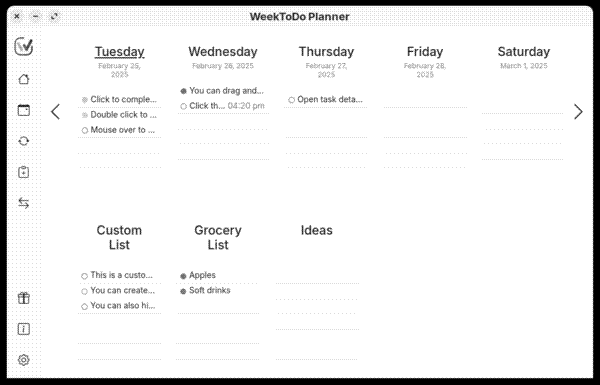
There are also additional lists at the bottom: a custom list, a grocery list, and an ideas list. You can delete them and/or add others. More on the latter in a few moments.
Add tasks to a day by clicking on a blank line, typing a description of the task, and pressing Enter. There doesn’t seem to be a limit to the number of tasks you can add to a day’s list. That said, if you have more than four or five tasks, you should perhaps consider rethinking how you do things.
Adding Detail to Tasks
You can add more information to a task by holding your mouse pointer over the task and then clicking the three vertical dots that display. This pop up window displays:
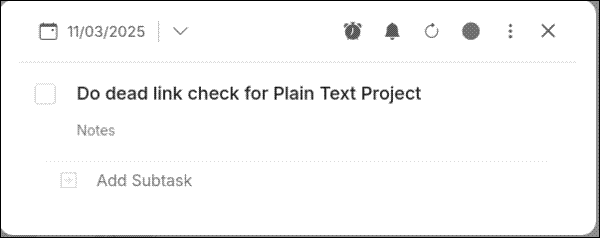
You can:
- Add a time at which the task must be done:
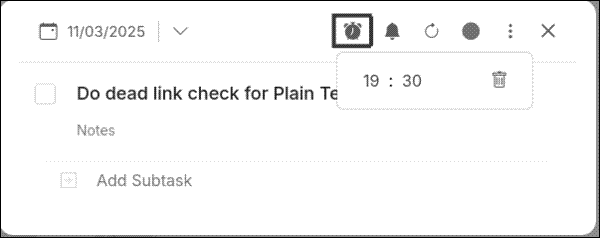
- Set an alarm:
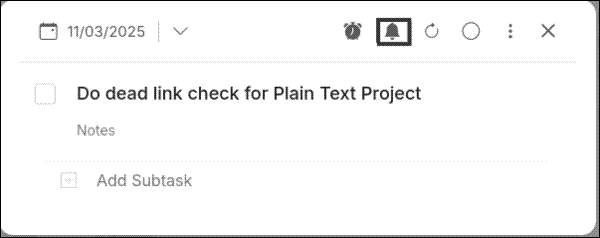
- Make the task recurring:
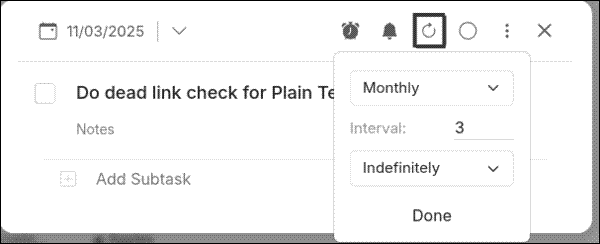
- Add a coloured dot to the task to make it stand out:
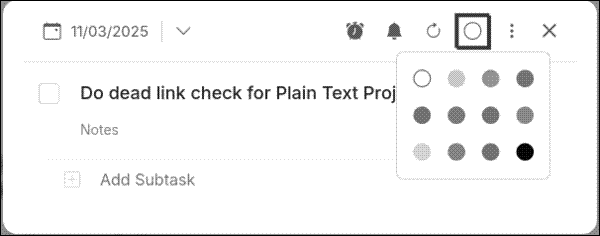
- Add one or more sub tasks
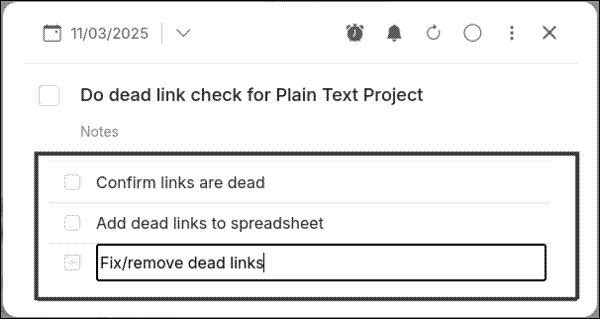
To complete a task, click on it. The task gets struck out and you can move on to the next one.
Adding Lists
Remember the lists I mentioned a few paragraphs back? With them, you can add other information that you need to keep track of or handle. Like, say, a shopping list or items you’d jot in a scratchpad.
To add one, click the New Custom List icon in the sidebar on the left of the application. This displays:
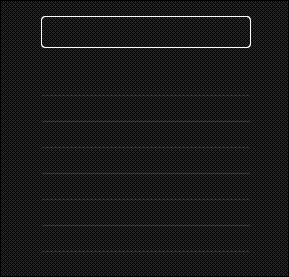
Type a name for the list, press Enter, and away you go. Repeat that for each custom list that you want to add.
Your custom lists persist across weeks until you delete them.
Some Things to Note
You can’t add tags to a task, nor can you zoom in on a particular day’s tasks.
If you don’t have the application’s window maximized, the descriptions of your tasks might be truncated, especially if you have a smaller screen. You can get a full view of your tasks by either:
- Maximizing the window, or
- Hovering over a task in a list to see the full description.
Here’s WeekToDo with its window maximized:
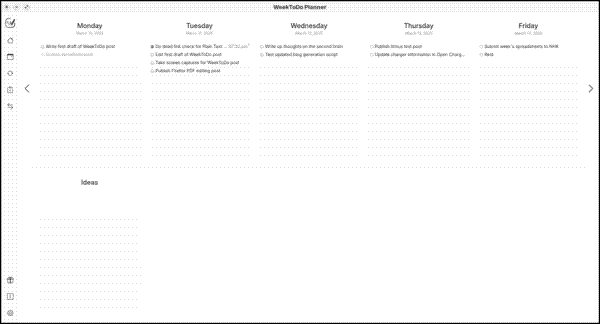
There’s also a slightly annoying sponsor blurb that displays when you start WeekToDo. It’s not huge and only appears for a few seconds. Still …
Changing Settings
To do that, click the cog icon in the sidebar on the left side of the application’s window. This screen displays:
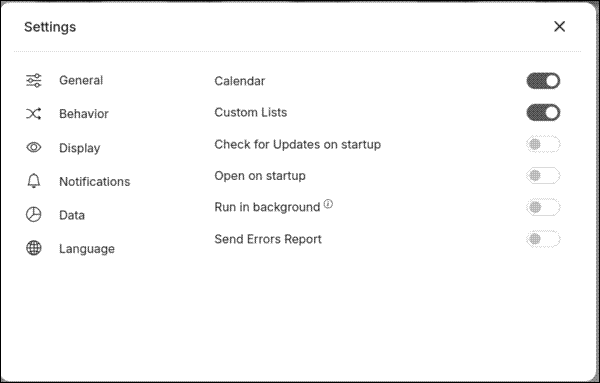
You can change options like:
- Whether or not to display calendars and custom lists.
- Whether or not your week starts on Monday.
- What happens to tasks once you’ve completed them.
- Display settings (like dark mode and whether or not to display the details of a task in full screen mode).
- The language of the user interface.
For most people, how WeekToDo behaves out of the box is probably enough.
Final Thoughts
WeekToDo reminds me of an application called Planner (which I looked at in a previous post). WeekToDo, though, is a bit more stripped down — there’s no inbox, no concept of projects, or anything like that.
WeekToDo’s strength is that it gives you a view of what you need to do over the space of a week. And it does that in a clean, simple way.
WeekToDo isn’t for me. But give it a try. It might be the todo list or planning application that you’re looking for.